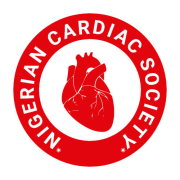

Author(s): Abd-El-Kareem TS, Badran HM, Al-Amin AM and Ahmed NF
Background: Hypertrophic obstructive cardiomyopathy (HOCM) is an inherited disorder, characterized by left ventricle outflow tract obstruction. We performed this study to investigate the changes in left ventricular mechanics after surgical myectomy in patients with HOCM.
Materials and methods: We enrolled 15 patients with HOCM referred to surgical myectomy according to the recommendation of American Heart Association. All patients underwent transthoracic 2D speckle-tracking echocardiography to measure cardiac dimensions and mechanics before and after surgery. statistical analyses were performed using GraphPad Instat and MedCalc software.
Results: Following myectomy, all patients reported improved symptoms and increased functional capacity. Conventional echocardiographic measurements showed that surgical myectomy significantly decreased left atrial volume index (r=0.83, p�?0.0001), interventricular septum thickness (p�?0.0001, r=0.79), left-ventricular mass index (p�?0.0001, r=0.49) and resting left-ventricular outflow tract pressure gradient (p�?0.0001, r=-0.03). In terms of leftventricular function, we observed significant decreases in fractional shortening (r=0.16, p�?0.0001) and ejection fraction (p=0.01, r=-0.04) after the procedure in comparison to baseline functional data. We further significant postoperative reductions in terms of average circumferential strain (p�?0.0001, r=0.49), basal rotation (p=0.03, r=0.97), apical rotation (p�?0.0001, r=0.94) and LV twist (p�?0.0001, r=0.96). However, no significant changes were observed after myectomy in terms of most longitudinal strain and left ventricular synchrony measures.
Conclusion: Surgical myectomy improves symptoms, relieves left ventricular outflow tract obstruction and decreases left atrial volume index in patients with HOCM, but shows no significant changes in LV longitudinal strain and LV synchrony measures. Future studies should employ a larger sample size and more sensitive methods of synchrony detection.